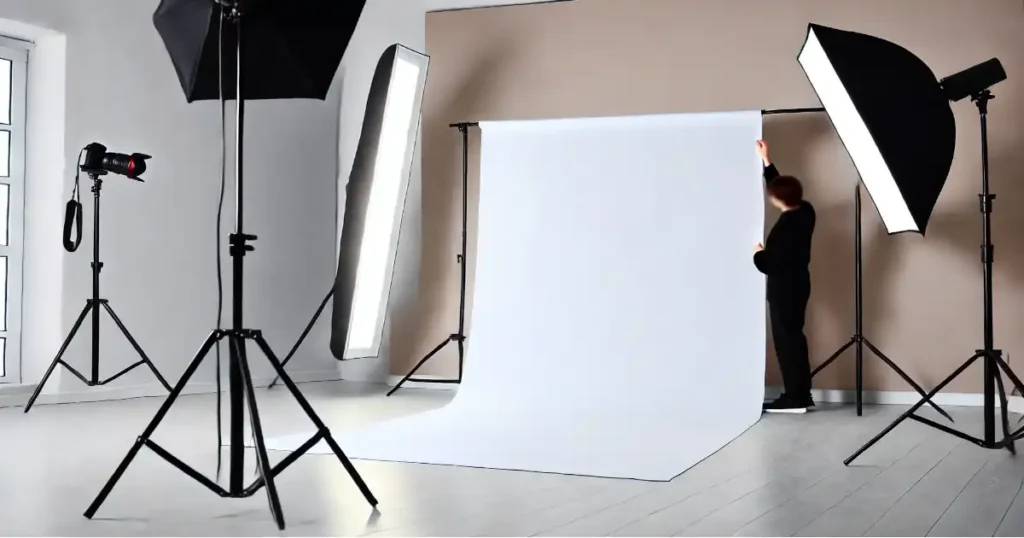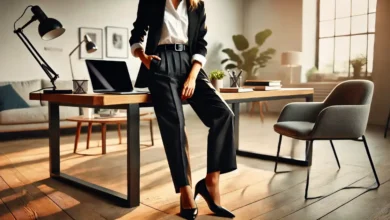The Ultimate Guide to Backdrop Stands: A Photographer’s Essential Tool

Backdrop stands have become indispensable for photographers, videographers, and event planners. Whether you’re capturing professional portraits, showcasing products, or creating a wedding photo booth, a high-quality stand provides a seamless, professional-looking background that enhances the subject’s visual appeal. Choosing the right stand can significantly impact the results, making it a key investment for both beginners and experienced professionals.
This article will explore the essentials of backdrop stands, covering types, materials, features, buying tips, and maintenance. This guide will equip you with the knowledge to make a smart decision and maximize the value of your backdrop stand.
1. What is a Backdrop Stand?
A backdrop stand is a support system designed to hold various types of backdrops, such as fabric, paper, or vinyl, creating a clean background for photography or videography. These stands are typically adjustable, allowing photographers to adjust height and width to fit their needs. They are widely used in studios, events, and even outdoor shoots to provide a professional setting for the subject.
The basic design of a backdrop stand consists of two vertical poles with an adjustable crossbar that supports the backdrop. The structure is usually lightweight yet sturdy enough to hold heavy fabrics or large paper rolls without sagging or tipping over.
2. Why You Need a Backdrop Stand
These stands are indispensable for photographers and videographers. They ensure the background is neat, smooth, and free from distractions, creating a perfect setting for subjects to stand out. Here’s why investing in a quality support system is important:
- Professional Presentation: It helps eliminate unwanted background elements, allowing the subject to become the center of attention.
- Flexibility: Their adjustable height and width accommodate different shoot settings and sizes, making them suitable for various applications.
- Portability: Many models are lightweight and easy to assemble, which is ideal for on-location work.
- Event Use: Besides photography, these stands are used for event displays, trade shows, and weddings, seamlessly holding banners or decorations.
3. Types of Backdrop Stands
These stands come in different styles, each suited for specific needs and environments. Here are some of the most popular options:
Portable Stands
Lightweight and foldable, these are easy to carry and set up at various locations. They’re perfect for photographers constantly moving or for events requiring quick setups.
Studio Stands
Generally larger and more stable, these are ideal for indoor use. They offer greater flexibility in height and width, making them a staple in professional photo studios where durability is key.
Adjustable Stands
These provide versatility in setup. Extendable poles accommodate various background sizes, from small banners to large paper rolls, making them flexible for different shoots.
Heavy-Duty Stands
These stands are made from durable materials, such as steel, and are built to hold heavier backdrops like large canvas or vinyl backgrounds. They provide maximum stability and are perfect for situations requiring extra support.
4. Material Choices for Backdrop Stands
The material used greatly affects durability, weight, and stability. The two most common materials are:

Aluminum Stands
Popular for their lightweight yet sturdy construction, these are easy to transport and suitable for both indoor and outdoor use. Although more affordable than steel, they may not be as durable when holding heavier backgrounds.
Steel Stands
Steel models are heavier and more durable, perfect for professional studios where stability is crucial. Though less portable, they offer stronger support, making them ideal for holding large or heavier backdrops without tipping over.
5. Key Features of a Quality Backdrop Stand
When choosing a backdrop stand, there are several important features to keep in mind to ensure it meets your specific needs:
Adjustable Height and Width
A versatile stand should have adjustable poles to accommodate various backdrop sizes. Look for options extending up to at least 10 feet in height and 10 feet in width. This flexibility will allow you to adapt the setup for different types of shoots, from portraits to wide-angle product photography.
Stability and Weight Capacity
Stability is crucial for preventing accidents during photo sessions. A stable stand ensures the backdrop won’t sway or fall. Pay attention to the weight capacity, particularly if you plan to use heavier backdrops such as canvas or vinyl. A strong base and durable materials will help keep the stand secure.
Ease of Assembly and Portability
For photographers who work on location, easy assembly and portability are key. A backdrop stand that can be quickly set up and taken down saves time and effort. Models with a carrying case make transportation convenient for mobile photographers or event organizers.
6. How to Choose the Best Backdrop Stand for Your Needs
Selecting the best backdrop stand is not just about choosing the first one that fits your budget. Evaluating various factors is essential, ensuring your chosen stand aligns with your specific needs. Whether you’re a professional photographer or videographer or organizing an event, understanding the key considerations will help you make a well-informed decision. Here are the main factors to consider:
Indoor vs. Outdoor Use
One of the first things to consider when purchasing a backdrop stand is where you’ll be using it. The environment plays a significant role in the type of stand you need, as indoor and outdoor use require different levels of durability and stability.
- Outdoor Use: If you plan on using the stand outdoors, you’ll need a model that can withstand elements like wind, uneven terrain, and possibly even rain. In this case, stands with a strong base and durable materials such as steel are a better choice. Steel stands provide the necessary weight and sturdiness to ensure the backdrop remains stable in outdoor conditions. Investing in sandbags or weighted bases can provide added security, preventing the stand from tipping over during a breezy day.
- Indoor Use: A lightweight aluminum stand should suffice for indoor photography or event setups. Aluminum stands are stable enough for indoor conditions, where wind and uneven ground aren’t concerns. Plus, they offer the advantage of being lighter and easier to move around if you work in a studio or enclosed space. If portability is a key factor, aluminum models are typically foldable and come with carrying cases, making them a perfect solution for indoor shoots that require mobility.
Budget Considerations
Another important aspect of choosing a backdrop stand is your budget. The price of a stand can vary widely, depending on the size, materials, and brand. Typically, you’ll find stands priced anywhere from $30 to over $200. Here’s a breakdown of how budget might influence your purchase:
- Lower-End Stands ($30 to $70): These stands are usually made from lightweight aluminum and are best suited for beginner photographers or casual, temporary setups. They are portable and easy to set up, but they may lack the sturdiness required for heavier backdrops or extended use. A budget-friendly option might be sufficient if you’re just starting out or only need a stand for occasional use.
- Mid-Range Stands ($70 to $150): These models balance affordability and quality. You’ll often find adjustable stands with more robust materials like reinforced aluminum or lightweight steel in this price range. They tend to offer greater stability and better height and width adjustments, making them ideal for semi-professional photographers or frequent use.
- High-End Stands ($150 to $200+): These stands are often made from heavy-duty steel and can support larger, heavier backdrops like canvas or vinyl. They provide the most durability and stability, making them ideal for professional photographers, videographers, and those needing a reliable setup for commercial or long-term projects. Though more expensive, they are a solid investment if you require top-tier performance.
Always remember to set a budget that balances quality and affordability. While going for the cheapest option is tempting, a higher-quality stand can save you money in the long run by providing better durability, stability, and features.
Compatibility with Different Backdrops
Not all backdrop stands are designed to accommodate every type of backdrop, so compatibility is another key factor. Depending on the kind of shoots you do or the events you organize, you may use fabric, paper, or vinyl backdrops. Ensuring your stand works well with these materials will save you from unnecessary frustration and mishaps during setup.
- Fabric Backdrops: Fabric backdrops like muslin or polyester are common for studio photography. They are lightweight and typically come with clips or clamps to attach to the stand. If you’re using fabric, ensure the stand comes with clips or a crossbar system that can securely hold the material without it sagging or shifting during the shoot.
- Paper Rolls: Paper backdrops are popular for creating seamless backgrounds in product photography or portrait sessions. These rolls are usually heavier than fabric, so you’ll need a stand to handle the added weight. Look for stands with a sturdy crossbar that allows you to unroll the paper smoothly, ensuring it stays flat and doesn’t wrinkle.
- Vinyl Backdrops: Vinyl is another material often used for photo shoots or event decor, particularly because of its durability and wrinkle resistance. However, vinyl backdrops can be heavier than both fabric and paper. For this reason, you’ll need a stand with a high weight capacity. Heavy-duty models made from steel are recommended for supporting vinyl backdrops without the risk of sagging or toppling.
Some stands come with additional accessories like backdrop clips, carrying bags, and crossbar extensions, in addition to these backdrop types. These can make setup more efficient and tailored to your needs. Before purchasing, check whether the stand includes these accessories or if they need to be bought separately.
Additional Considerations for Choosing a Backdrop Stand
Ease of Assembly and Portability
Another factor to consider is how easy the stand is to assemble and transport. Portability is crucial if you’re a photographer who frequently moves between locations. Lightweight, foldable stands with carrying cases are ideal for photographers on the go. Conversely, portability might not be as important if you work primarily in a studio, but the ease of assembly still matters for efficiency during shoots.
Weight Capacity
Ensure the stand can support the weight of the backdrops you plan to use. Some backdrops, particularly vinyl or large fabric, can be heavy. If you use heavier materials, opt for stands designed with a higher weight capacity. This prevents damage to the stand and ensures your backdrop remains taut and wrinkle-free during shoots.
Versatility and Adjustability
Stands that offer adjustable height and width provide more versatility. A good stand should accommodate different sizes of backdrops, so look for models with extendable poles and flexible width adjustments. This is especially important if you frequently switch between portrait and landscape photography or use a variety of backdrop sizes for different shoots.
7. Top 5 Backdrop Stands of 2024
Based on functionality, durability, and user reviews, here are the top 5 stands for 2024:
- Neewer Photo Studio Stand
Best for: Affordability and portability
Features: This option offers an adjustable height of up to 10 feet, lightweight aluminum construction, and a carrying case. It’s an affordable solution for photographers on the go, balancing cost and quality. - Fovitec StudioPRO
Best for: Professional studios
Features: With its heavy-duty steel build and height adjustment of up to 10 feet, this stand is perfect for heavier materials like canvas or vinyl. It is ideal for studios that prioritize stability. - Emart T-Shape Stand
Best for: Compact setups
Features: This stand, with its simple T-shape design and easy assembly, is perfect for smaller backgrounds or banners, making it a great choice for limited spaces. - LimoStudio Photography Stand
Best for: Versatility
Features: This stand’s adjustable width and height of up to 8 feet, aluminum construction, and lightweight design provide flexibility for different shooting needs and are easy to transport. - Kate Collapsible Stand
Best for: On-the-go photographers
Features: This collapsible stand is easy to carry and is perfect for location shoots. It includes clips for fabric backdrops, adding to its versatility in different setups.
8. How to Set Up and Maintain Your Backdrop Stand
Setting up is easy with these steps:
- Unpack: Take all parts out of the carrying case.
- Extend the Legs: Spread the base on the ground for stability.
- Attach the Crossbar: Insert it into the slots at the top of the vertical poles.
- Adjust the Height: Raise the poles to the desired level and lock them in place.
- Mount the Backdrop: Use clips or roll paper through the crossbar to secure your backdrop.
Maintenance Tips:
- Regularly check for loose screws.
- Wipe the stand with a damp cloth to remove dust.
- Store in a dry area to prevent rust.
9. Creative Uses of These Stands
These stands aren’t just for photography. Here are some alternative uses:
- Event Decor: Perfect for holding banners or decorations at weddings, trade shows, or corporate functions.
- Video Production: Create professional video backgrounds for interviews or YouTube content.
- Green Screens: Ideal for holding green screens for digital editing and special effects in video projects.
10. Conclusion
A backdrop stand is essential for photographers, videographers, and event organizers. It provides the flexibility to create a clean, professional-looking background for any occasion. With the right stand, you can elevate the quality of your work, whether in a studio or on location. By considering the types, materials, and features outlined in this guide, you can choose the perfect backdrop stand that fits your needs and budget.
Whether you are just starting out or an experienced professional, investing in a reliable backdrop stand is a decision that will pay off in improved results and greater versatility in your work.
Frequently Asked Questions (FAQs)
What is the best material for a backdrop support?
The best material depends on your needs. Aluminum is lightweight and portable, while steel offers more durability for heavier backgrounds.
Can I use one of these stands outdoors?
Yes, many stands are designed for outdoor use, but they need to be stable and sturdy enough to withstand wind and uneven ground.
How do I choose the right size?
Consider the size of your background and the space available. Adjustable models offer flexibility in height and width, making them suitable for different setups.
Are these stands easy to transport?
Portable options are lightweight and often come with carrying cases, making them ideal for photographers who work on location.
What types of backdrops can be used?
You can use fabric, vinyl, or paper backgrounds with most stands. Just ensure the stand can support the weight of your chosen material.
How do I prevent the setup from tipping over?
For extra stability, especially outdoors, secure the stand with sandbags or weighted bases to prevent it from tipping.





